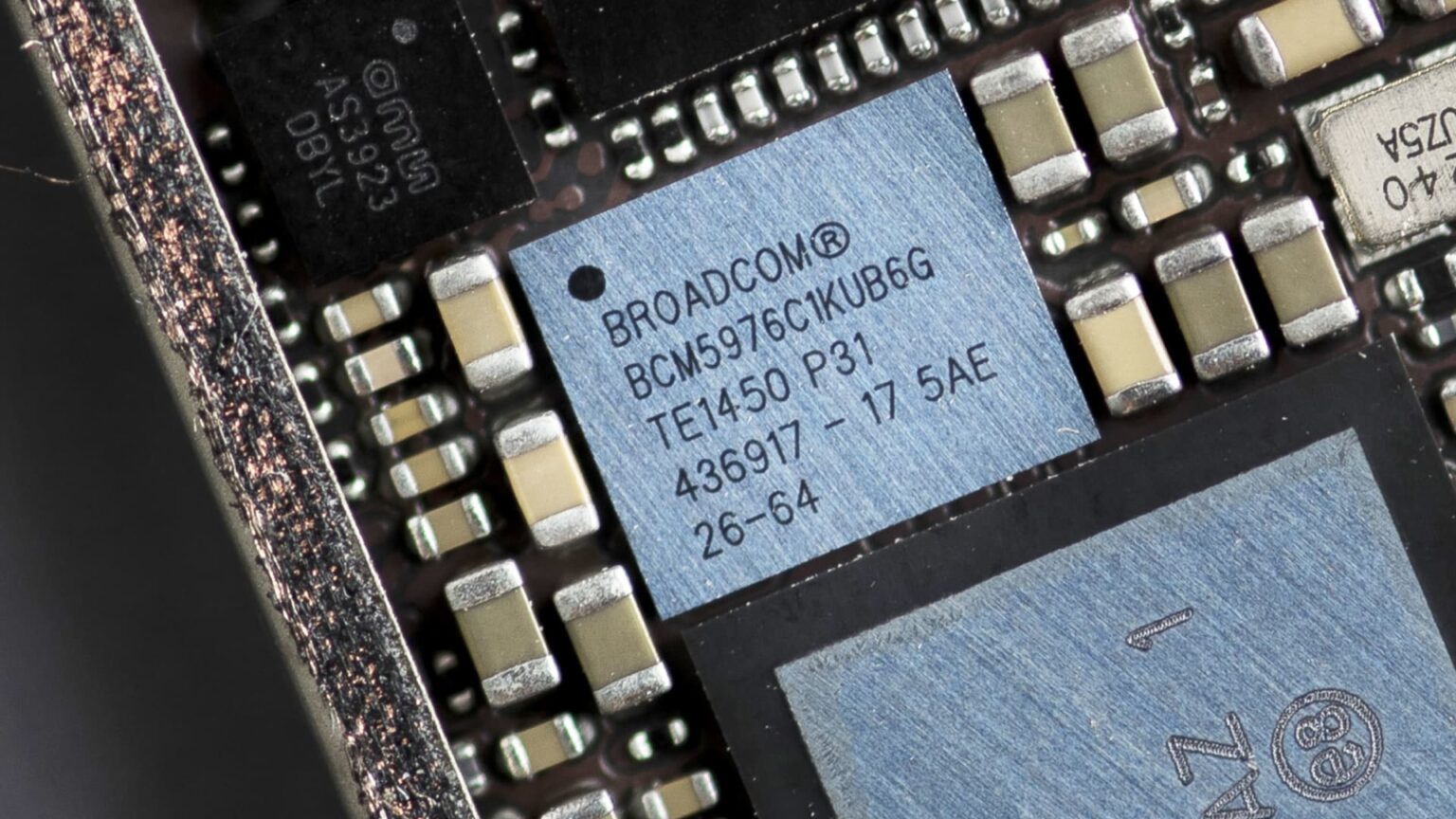Broadcom (AVGO) reported mixed fiscal fourth-quarter results Thursday, coming up slightly short on the top line, despite strong profitability. The forward guidance was complicated by a number of moving parts and cyclical challenges in the semiconductor business — but we’re unconcerned because the company’s AI story remains intact, along with the ongoing integration of a key cloud-computing company. Revenue for the three months ended October 29 increased 4% year-over-year, to $9.3 billion, missing analysts’ forecasts of $9.41 billion, according to LSEG. Earnings-per-share (EPS) on the basis of non-generally accepted accounting principles (GAAP) climbed 6% on an annual basis, to $11.06, exceeding analysts’ expectations of $10.45-per-share, LSEG data showed. Adjusted Earnings before interest, taxes, depreciation and amortization (EBITDA) of $6.05 billion also beat out the $5.97 billion Wall Street predicted. Shares of Broadcom were roughly flat in post-market trading, at around $920 per share, after climbing 2% in Thursday’s session. Bottom line It wasn’t a clean quarter for the semiconductor-and-software firm, and some investors may point fingers at the lack of revenue upside. But there’s enough in this quarter to believe the thesis is progressing. The way we look at Broadcom is simple. Its networking business is surging right now thanks to spending on artificial intelligence, and management sees demand for its AI accelerator increasing. Meanwhile, we think the market is underestimating what Broadcom can do with its acquisition of cloud software-vendor VMware . Beyond revenue and profit, VMware reduces the cyclicality of Broadcom’s entire business – which now has more of a 50-50 semiconductor-to-software split. When Broadcom announced this massive software deal in May 2022, management’s target was to increase VMware’s earnings before interest, taxes, depreciation and amortization (EBITDA) to a run-rate of $8.5 billion in three years, from $4.7 billion in fiscal year 2022 . This goal seemed achievable at the time. We had no reason to doubt Broadcom. But when asked if this target was still in play, CEO Hock Tan responded by saying that its EBITDA will “practically” by there exiting fiscal year 2024. This was great news and a sign the deal is even better than what was originally expected. The AI tailwinds and VMware deal will keep profits growing and more than offset some of the cyclical parts of the semiconductor business. The current 2.2%-yielding dividend and stock-buyback plan are cherries on top. And that’s why would be buyers on weakness. Quarterly commentary The semiconductor business saw its revenue grow 3%, to $7.3 billion, but there were both strengths and weaknesses across its different end markets. Strength came from the networking part of the business, which benefitted from hyperscaler customers – the big cloud providers — spending on Broadcom’s custom AI accelerators for generative AI applications, as well networking switches, routers and other products that scale out AI data centers. Total networking revenue increased 23% year-over-year, to $3.1 billion. On generative AI alone, revenue was nearly $1.5 billion. One of Broadcom’s main customers for custom AI compute engines is Club holding Alphabet (GOOGL), which collaborates with Broadcom on the design and manufacture of Google Tensor Processing Units (TPUs). But the company is also seeing strong demand from hyperscalers deploying ethernet, the standard protocol in front-end networks, into their AI networks. Broadcom’s AI network solutions represent an important part of our investment thesis. Elsewhere within the semiconductor unit, revenue from wireless — which includes chip sales for Apple iPhones — fell 3% year-over-year, to $2 billion. Server storage revenues were down 14%, at $1 billion, due to cyclical weakness that started late in the fiscal year. Broadband sales dropped 9%, to $950 million, and industrial sales were relatively unchanged at $236 million. In the infrastructure software side of the business, revenues increased about 7% from last year, to $2 billion. This is a stable part of the business, with the majority of revenues coming from recurring subscription and maintenance. But the software business has been supercharged following last month’s closing of the VMware acquisition. Broadcom said Thursday that it plans to refocus VMware on its core business of creating private and hybrid cloud environments for large enterprises. Management used the the post-earnings conference call to tout VMware’s leading technology to virtualize entire data centers. “Our strategy going forward is simply to enable global enterprises to run their applications across their data centers, as well as on public clouds by consuming VMware’s higher value software stack,” CEO Hock Tan explained. Part of the plan is to convert VMware’s installed base of licenses that is over 60% perpetual to one that is mostly subscription and therefore, more predictable. The company also sees an avenue to accelerate revenue growth over the next three years and plans to invest $1 billion to transition VMware into the new “Broadcom model.” The company also highlighted VMware’s partnership with Club holding Nvidia (NVDA) as a “very strong attraction” for enterprises looking to get into AI analytics. VMware’s ability to virtualize Nvidia’s graphics processing units (GPU) for AI was one of the key reasons why we started buying the stock in August. Lastly, as Broadcom’s cash flow increases annually, so does its dividend payment. Thanks to the $17.6 billion of free cash flow it generated in fiscal year 2023, an increase of about 8% over fiscal year 2022, Broadcom increased its quarterly stock dividend by 14%, to $5.25 per share. This new annual figure of $21 per share increased the dividend yield to about 2.28%, up from the 2%, based on Thursday’s close of $922 a share. The company also said it had resumed its share-repurchase program following the closing of the VMware acquisition. The company ended the year with $7.2 billion of authorized share repurchases programs. How is that possible after making such a large acquisition? Given how long the VMWare deal took close, Broadcom was able to build up cash to put towards these share repurchases. 2024 outlook Looking out to fiscal year 2024, which ends on Nov. 3, 2024, management’s guidance is a little tricky. There’s some haziness to the consensus estimate because not every analyst has included a contribution from VMware in their models. On one hand, the company expects revenue to be approximately $50 billion, which is nearly $2.5 billion short of the consensus estimate on LSEG. It looks like the culprit of the shortfall is coming from the semiconductor business, which the company guided to mid-to-high single-digit revenue growth versus too-optimistic expectations of about 11%, according to FactSet. This suggests that some of the cyclical challenges impacting the semiconductor business excluding AI will continue into the next fiscal year. By end market, networking is expected to remain on fire due to hyperscaler strength, with revenue expected to be up 30% year-over-year. Wireless revenue is expected to be stable. Revenue at the industrial business is expected to be down by low single digits. And service storage is expected to decline by a mid-to-high teen percentage, with broadband down by a low-to-mid teen percentage. For fiscal 2024, management guided for $12 billion of revenue from VMware over 11 months of its contribution. This does not include $2 billion worth of revenues from some of VMWare’s business it deemed non-core and plans to divest, meaning the true revenue guide should actually be higher. But on the other hand, Broadcom anticipates 2024 adjusted earnings before interest, taxes, depreciation and amortization (EBITDA) of approximately 60% of revenue, implying about $30 billion. That’s nicely above estimates on LSEG of $27.23 billion and a good sign of the company’s ability to integrate and drive synergies from the VMware deal. (Jim Cramer’s Charitable Trust is long AVGO. See here for a full list of the stocks.) As a subscriber to the CNBC Investing Club with Jim Cramer, you will receive a trade alert before Jim makes a trade. Jim waits 45 minutes after sending a trade alert before buying or selling a stock in his charitable trust’s portfolio. If Jim has talked about a stock on CNBC TV, he waits 72 hours after issuing the trade alert before executing the trade. THE ABOVE INVESTING CLUB INFORMATION IS SUBJECT TO OUR TERMS AND CONDITIONS AND PRIVACY POLICY , TOGETHER WITH OUR DISCLAIMER . NO FIDUCIARY OBLIGATION OR DUTY EXISTS, OR IS CREATED, BY VIRTUE OF YOUR RECEIPT OF ANY INFORMATION PROVIDED IN CONNECTION WITH THE INVESTING CLUB. NO SPECIFIC OUTCOME OR PROFIT IS GUARANTEED.
Broadcom (AVGO) reported mixed fiscal fourth-quarter results Thursday, coming up slightly short on the top line, despite strong profitability. The forward guidance was complicated by a number of moving parts and cyclical challenges in the semiconductor business — but we’re unconcerned because the company’s AI story remains intact, along with the ongoing integration of a key cloud-computing company.
Read the full article here













